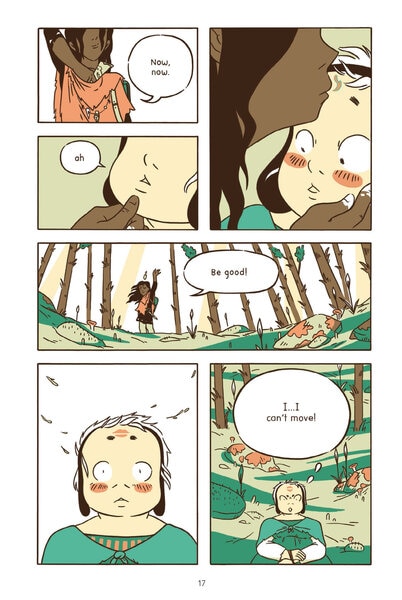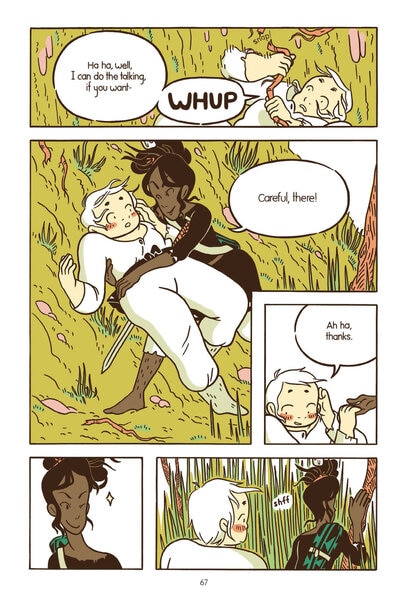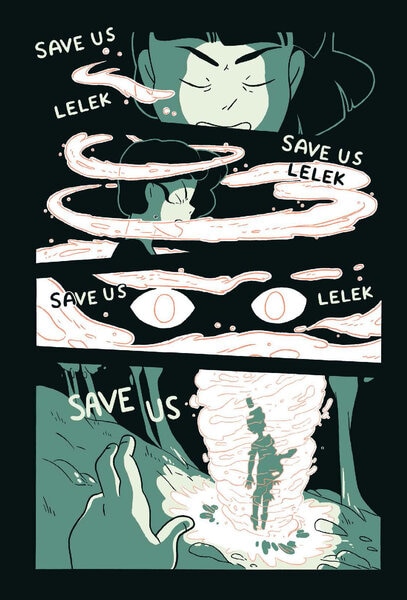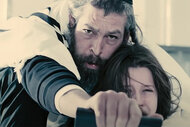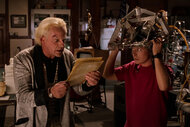Create a free profile to get unlimited access to exclusive videos, sweepstakes, and more!
A look at Witchlight, the queer adventure comic from Jessi Zabarsky
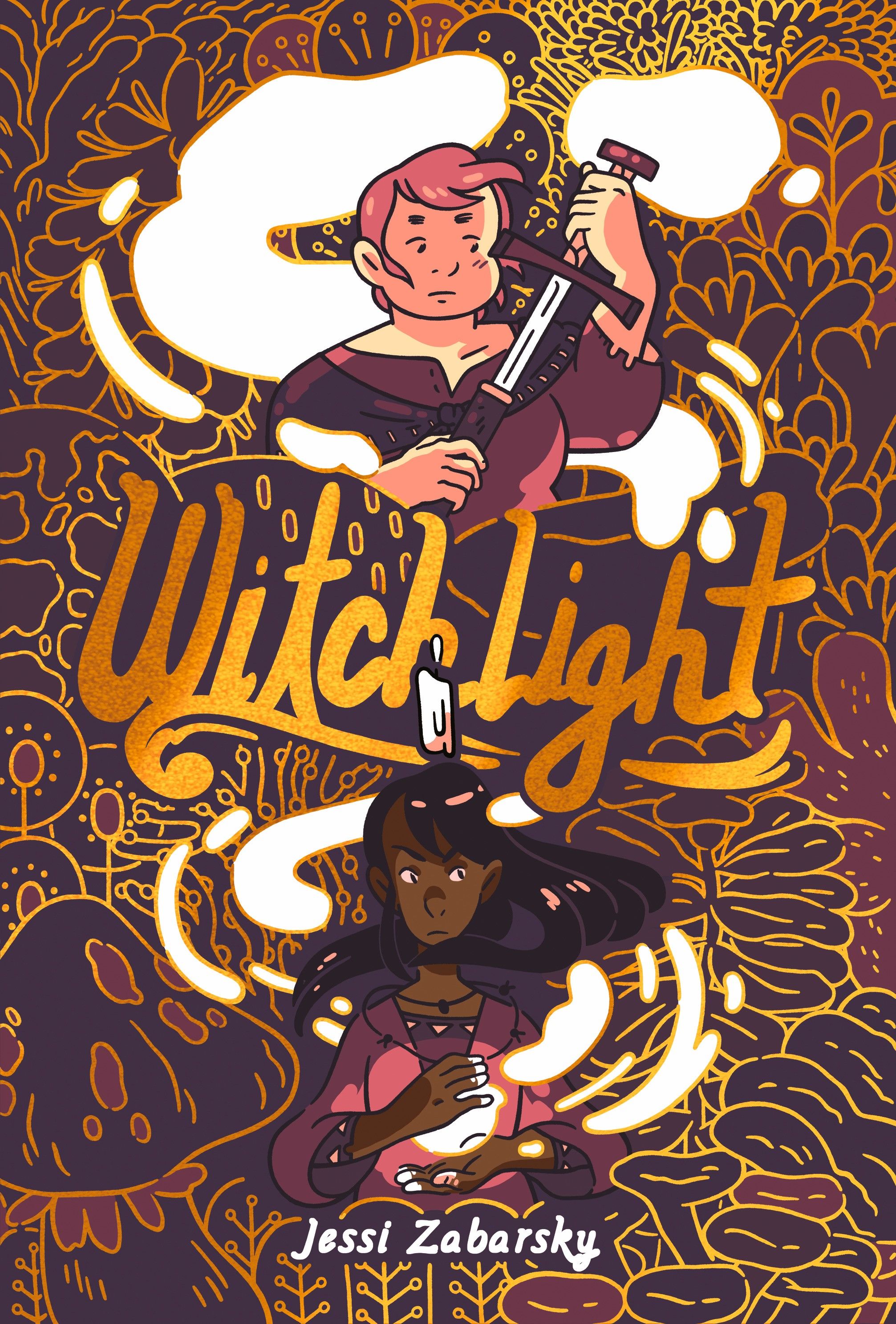
Jessi Zabarsky has done a handful of short comics that readers might recognize, but Witchlight, published through Random House's graphic novel line, is her full-volume debut. Collecting the webcomic serial in its entirety, this is a gorgeous volume with a unique art style and a subtle, intimate storytelling tone that makes it stand out as an important work of modern YA comics.
Drawing reference from Russian folk art, humor comics, and Shonen manga by female creators, Witchlight brings in the dreamy, adventurous quality of much of the best fantasy YA. However, that is not the full extent of its message, which is ultimately about making the extra effort to meet people where they're at rather than where you want them to be.
Witchlight begins with protagonist Sanja being left to watch her family's booth while her father and brothers go enjoy the market. The witch Lelek is involved in a skirmish when a young man grows agitated that she low-key swindled him, which then leads to a short, inadvertent sword fight with Sanja. Sanja awakens with her hands bound, and Lelek grills her for information on how to become a better sword fighter. The two of them embark on a quest to recover the missing half of Lelek's soul.
Sanja and Lelek form deeper feelings for one another as the story goes along. Lelek ultimately learns to let go of her pride and to accept help, while Sanja learns to let others take things at their own pace. Witchlight brings in a lot of familiar themes from YA fantasy, but its excellence lies in its ability to connect the overarching quest to quiet, personal moments between its characters. The story's willingness to focus on the connections between characters and their personal journey, while moving at a deliberate pace through the overarching adventure narrative, leads to a lot of satisfying character beats.
"At the time, I wasn't finding this kind of story in American comics very often. There were a few webcomics which I was very excited about — like Balderdash by Victoria Grace Elliot — and I wanted more!" Zabarsky said, in speaking about this comic to SYFY FANGRRLS. "I was mostly making it for myself — to push my skill set and to draw and write exactly what I wanted to. It's a quiet, aesthetic story that isn't about saving the world or grand declarations of love, and I think people connect to how small and intimate it is."
Zabarsky is a longtime comics fan, having gotten into them via humor and adventure strips. According to her, "My mom had Calvin and Hobbes, The Far Side, and Tintin collections when I was young, and I got a hold of them when I was 8. It didn't click for me that comics were something I could make myself until a few years later, when I borrowed the first volume of Ranma 1/2 from the library. I read it over and over, I couldn't believe how funny and cute and exciting it was, and all in black and white!"
The layout of Witchlight shows a visual storytelling style that is specifically well-suited to comics, and the pacing of the story is obviously told by someone with a genuine love of the form. We asked Zabarsky why it was the appropriate medium for this specific story: "Mainly just because it's the one I'm best at! I also particularly love comics because the words and pictures can do very different work from what they do in other mediums. I love slow, emotive pacing, dilating time with repeated panels, and communicating the story with minimal dialogue. Comics are also very accessible to start making! I think Witchlight could work in film or animation, too, but for most of the time I was making it, I was either unemployed or working minimum-wage jobs."
A central theme of Witchlight is forgiveness: The main characters learn to forgive each other, which leads to greater personal fulfillment for them and puts them in a better place to be able to move forward. "I'm not sure I've ever made a story with a true villain, they're just not very interesting to me. I'm drawn more to regular, flawed people interacting and figuring themselves out," Zabarsky said. "For a long time, I struggled with forgiving people in my own life, and I think that how so many of our stories feature an irredeemable antagonist contributed to that mindset. Knowing when it's helpful or safe to forgive someone, or when it's unproductive, or even to what level to forgive, is a valuable and difficult skill to develop, but it's so necessary for all of us!"
As for what the central message of the comic is intended to be, Zabarsky told us, "That being open and trusting with other people is worthwhile and necessary, and that when you learn to trust yourself, strengths and flaws together, it's much less scary. There are so many different ways you can connect to people, and that's wonderful!"
